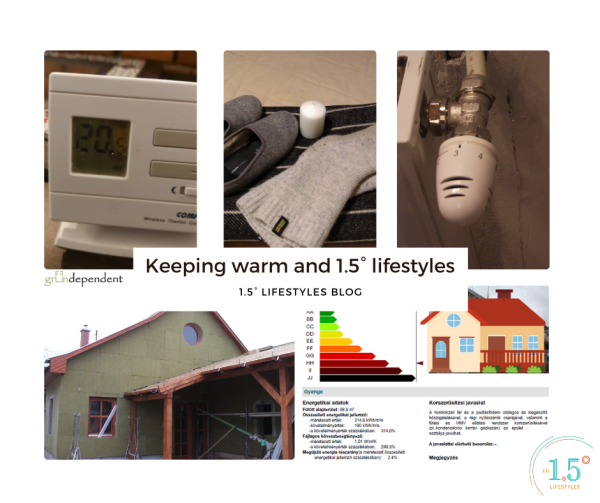
More than 60% of home energy consumption is used for heating in an average European household, thus paying attention to our heating methods and practices not only help us in pursuing 1.5° or green lifestyles, but it is also important because small changes – without major investments – can lead to big impact.[1] You may know that lowering the indoor temperature by 1-2°C can result in 6-10% energy use (and thus carbon footprint) reduction, and if 23-24°C is the starting point, as it is the case in many Hungarian households, this will definitely not result in freezing ourselves.
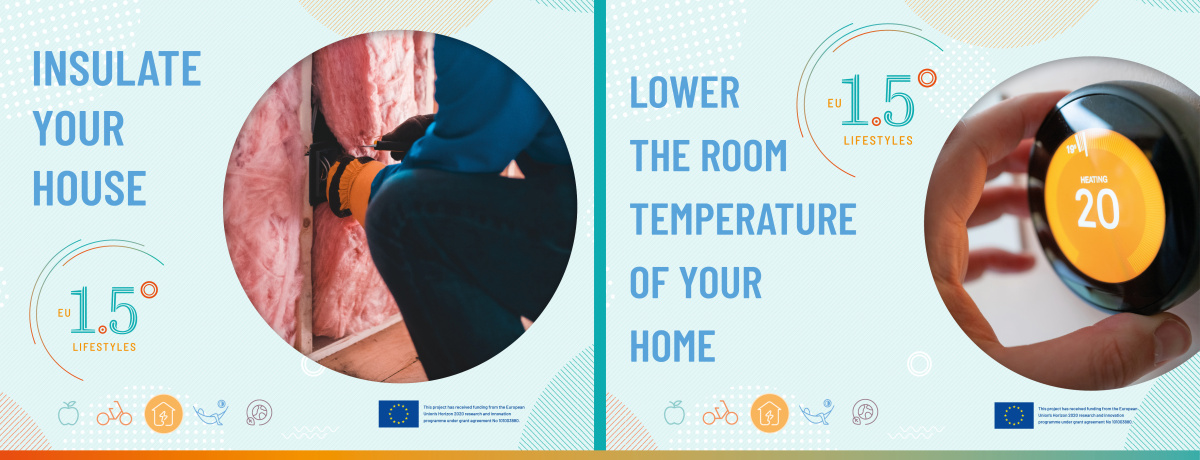
In the following, we are not going to provide general tips, but we will give you a glimpse into the methods, practices and technologies applied in three different households of the GreenDependent team. In case you are more interested in general tips, go to the bottom of the blog where we also share some links to more general advice.
Edina Mihály – From insulating our home to changing our thinking patterns
We moved into our new home not far from the centre of Gödöllő, Hungary in 2018. After a long search and checking out numerous properties, we decided to buy a house at a fantastic location, to which all important things – town buildings, bus and train stations – are within a walking or cycling distance. However, this had a ‘price’, the house was in a really bad condition with badly fitting, draughty doors and windows, non-insulated walls and the energy certificate showing a horrible HH category.[2]
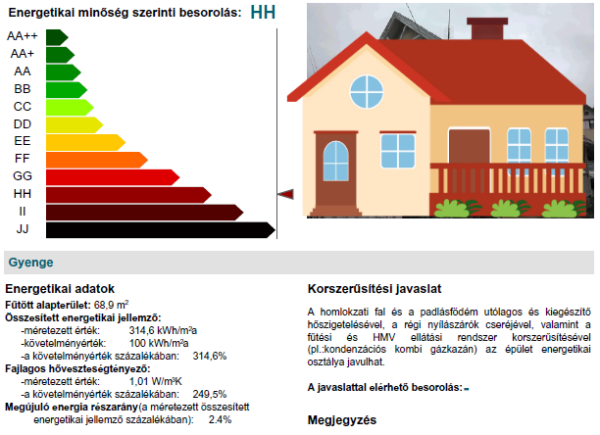
As soon as we had the opportunity, we replaced the stone and tile covers to warm cladding in the kitchen and the living room, replaced all the doors and windows and insulated the whole house. Before the renovation, the monthly average of our annual gas consumption was 156 m3, which right away decreased to 106 m3 in the year of the renovation, and last year it decreased further to 87 m3. Meanwhile, our lifestyle in general has not changed, we have a small child, so we are at home often, and we work from home quite a lot. Our climate corrected energy use shows a 32-33% reduction in both winters subsequent to the house renovation.
Naturally, this reduction is also greatly due to our changed energy use practices – especially mine, as I am the one who is always cold in the family. I have been working on myself from year to year to be able to bear lower temperatures, and what helped me a lot – and please, do not laugh at me – was the realisation that if my nose is cold, it does not necessarily mean that I am cold too. Earlier I took this as a physiological sign that requested the immediate turning up of the thermostat. ☺
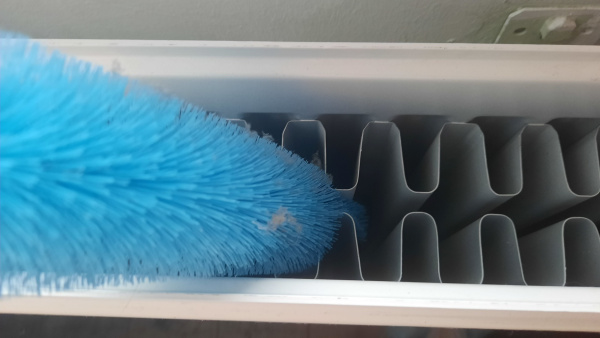
We try to postpone turning on the heating system as much as possible. We get the boiler checked every autumn, but as we had a major repair on it last spring, we skipped this year’s check. Before turning it on, we always clean the radiators and the pipes running along the walls. We try to clean between the fins of the radiator, and we also take away objects and toys from the radiator and the pipes.
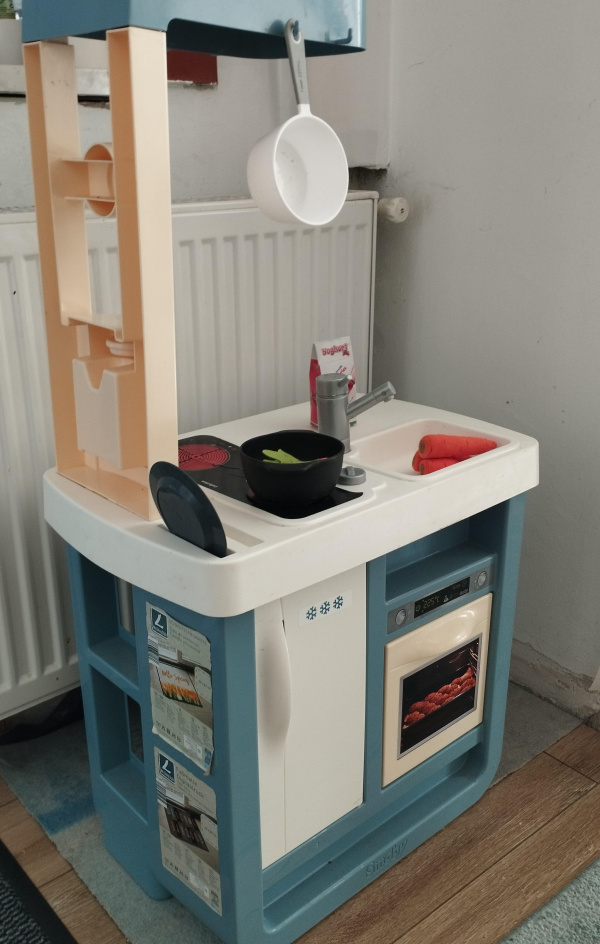
We check if the pressure in the system is correct, in our case; the best setting is if the indicator is in the upper part of the optimal range, as shown below in the picture. Therefore, to save, we needed to make a close acquaintance with our heating system ☺
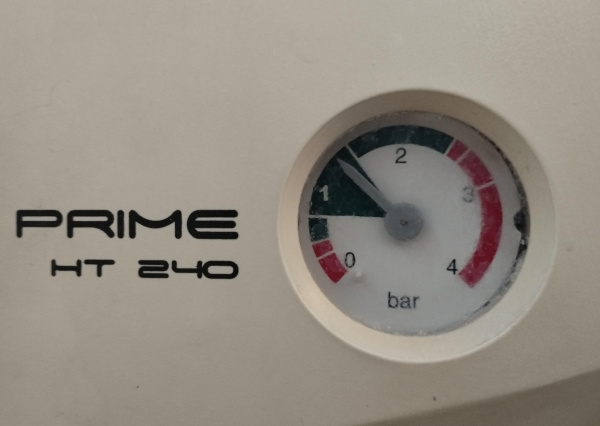
We usually heat in the morning and evening hours to 21°C, and we keep the temperature during the day around 19-20°C, while we set the thermostat to 17-18°C for the night.
Anita Szőllőssy - and her sleep…
Our cool, shady ground floor flat is a great asset in summer, but it is very difficult to heat in winter. We moved here one and half years ago after a complete heating system refurbishment, but even after last year’s mild winter we can feel that the exterior wall insulation is really missing. Unfortunately, due to some special regulations applicable for our apartment building, its walls are covered with a specific type of brick that cannot be altered even though it is not a historic monument.
We do have thick curtains that help a bit, and besides we pay special attention that when the heating is on, these curtains should not block the heat from the radiators. This year we bought some extra carpets and heat mirror foil to put up behind the radiators to keep as much heat within the walls as possible.
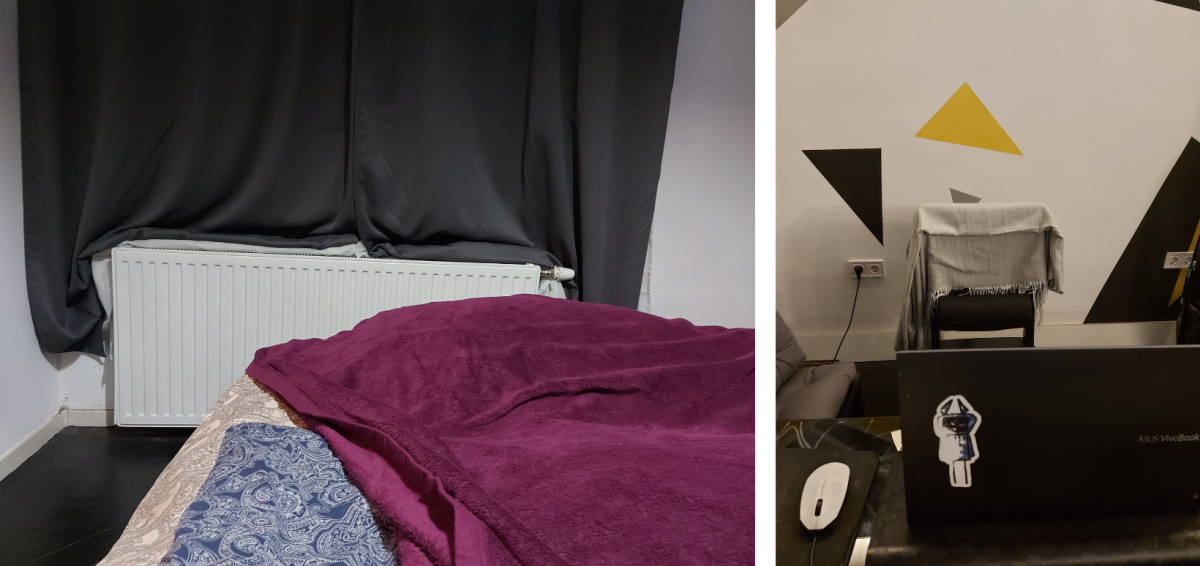
I can be quite cold below 25°C, which I inherited from my mother, and which makes things a bit more challenging for me in winter. In spite of the last mild winter, we tried to keep the temperature around 20.5°C, but it was not easy. I survived the winter in the company of blankets, plush jumpers, a winter robe, wool socks, as well as lots of hot tea and soups.
‘Unnecessary consumption’ makes me mad, so we always pay attention to turn down the thermostat while we are away.
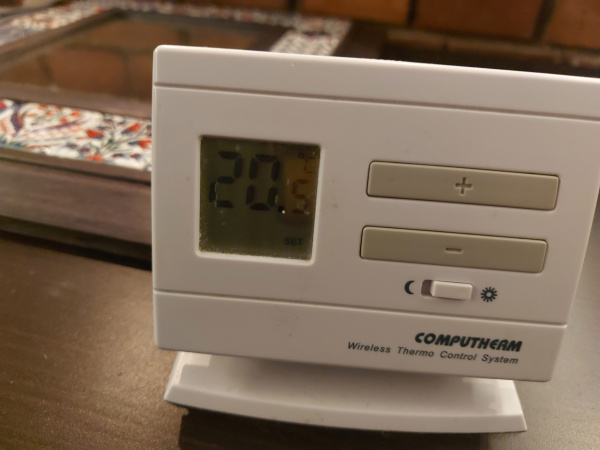
One of the biggest challenges for me is sleeping in the cold. So as not to heat the whole flat unnecessarily, I always take the thermostat with me to the sleeping room for the night and close all the doors. This way, we do not heat the whole house. For this coming winter we have already replaced our duvet for a winter one and besides I always put an extra blanket next to my bed, just in case.
You should try some kind of local heating solution beside hot drinks and food if you are as cold as I am. Last year I got an electric bed heater, against which I had had some reservations before, but I had to realise soon enough that turning it on for a short time before going to bed can make a huge difference. Thus, I can get into a warm bed and I fall asleep with the knowledge that I have been awarded/compensated for the whole day’s persistent shuddering with cold.
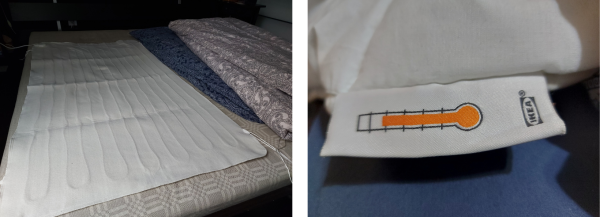
Edina Vadovics and Kristóf Vadovics – good design, appropriate maintenance, smart use
We renovated our mainly adobe walled house more than 15 years ago. We tried to use, apply and buy the then most environmentally friendly and most energy efficient materials and methods, including doors and windows. We were quite determined in our efforts, so our insulation was thicker than usual at the time. The contractors did not even want to put it all up as their initial response was that why spend so much money on it, less should be enough too. Luckily, our architect backed our concept, so the builders had no choice but to do as we had asked. And what seemed excessive then has become the norm today!
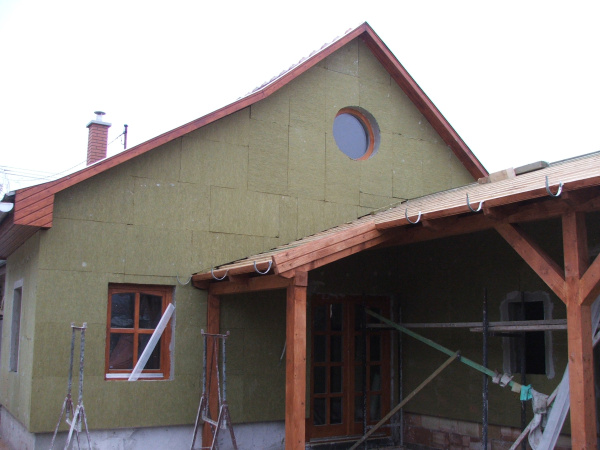
Unfortunately, we still use mainly fossil fuel for heating our home, natural gas. Our boiler is a condensation boiler, thus our energy use has decreased since we had it installed. We also put individual thermostatic valves onto the radiators, so we can adjust the heat in the different rooms of the house. There are rooms where the radiators are totally closed, and where they are fully open.

And while we are discussing settings… At the beginning of each heating season, we check the thermostat’s settings. We have different possibilities to programme it, e.g. we set it to different temperatures for a weekday and for the weekend, but within these two, we can also differentiate between morning, daily, evening or night settings. Naturally, these settings can be overridden when we go for a holiday or travel for work for several days. For these periods, we reduce the temperature by 2-3 degrees. When we are at home in the daytime, we never set it higher than 21°C and 19°C for the night – as we know that there should not be more than 2-3°C difference between the daily and night settings, so the walls and furniture do not cool down too much. This is quite important to remember.
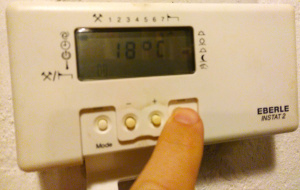
At the beginning of each heating season, or every two years if that is not possible, we get our heating system checked, maintained and adjusted by an expert. We have saved ourselves lots of headaches, and besides we can be sure that our boiler works efficiently. Furthermore, we always learn some new things, for example that if the boiler is not programmed to, or cannot adjust the temperature of the circulated water in the system, we can also do it manually, following the change of the external temperature. If the weather is not so cold outside, lower temperature water is also sufficient in the system.
Unfortunately, cleaning, dusting and bleeding the radiators (so that no air is trapped in them) is also part of the routines necessary for maintenance, but we can quickly get them done. They are worth doing as we can reduce the amount of energy we use for heating.
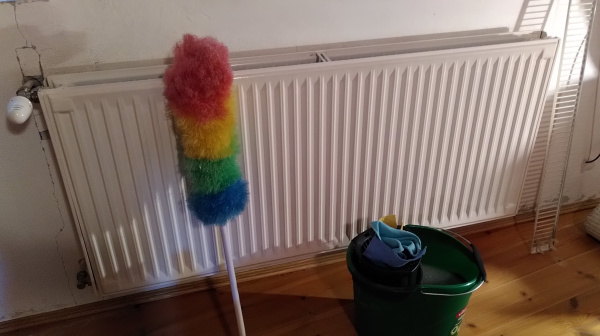
Besides good design and regular maintenance, our main principle is ‘heating ourselves and not the space around us’. Thus, we have winter slippers, wool socks and jumpers, and woollen blankets too. The blankets are sometimes also used over the duvet during very cold nights. This year’s plan is to put up more curtains where we do not yet have any to help keep the warm air inside. It would be better to have external shutters installed, but unfortunately this is presently not feasible.
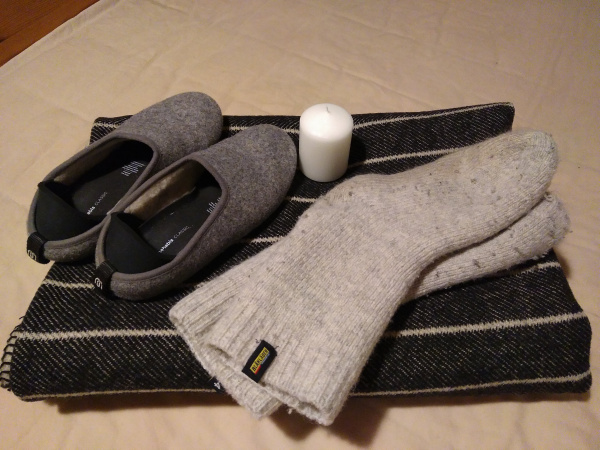
We can hear many times that working from home (home office) can help in reducing our carbon footprint. This can be true in many cases, especially if we live far from our workplaces and commuting means larger footprints. However, since we usually go to work by bike, and regulate our heating by lowering the indoor temperature to 19°C while we are in the office, working from home in our case actually resulted in larger energy consumption. And, in our specific case, the accompanying energy use reduction in the office did not balance out this increase. We did a small experiment and some metering in the GreenDependent office when home office working was forced upon us by the COVID pandemic. So, as a last bit of 1.5-degree heating, we keep track of our consumption, so we can find out about malfunctions easier, observe the effects of our behaviour change, and discover which changes in our lifestyles lead to larger savings, as we cannot count on being the ‘average’…
And to summarise… as heating is the largest contributor to our household energy consumption, we should pay attention to the aspects of design, maintenance, daily use and practices. If we do not have the financial means to renovate or refurbish now, we can still save 15-20% energy by regular maintenance and changing our everyday energy use, which can result not only in a lower carbon footprint, but also in more money for hiking, repairing our bikes or joining a local food box system. In addition, we can even contribute to reducing the energy dependency of our country.
To close, we offer some links for further tips and publications for those who wish to learn more:
- some tips from GreenDependent: https://greendependent.org/anyagok/EnergyNeighbourhoods_tips_heating.pdf
- energy efficient practices from the ENERGISE project: https://energise-project.eu/sites/default/files/content/ENERGISE_Heating_Challenge_Leaflet.pdf
- tips and more from the Energy Saving Trust and Citizens Advice:
Written by GreenDependent team members, with an introduction and closing by Edina Vadovics
[1] See more on this here
[2] You can find out more about home energy certificate e.g. here

